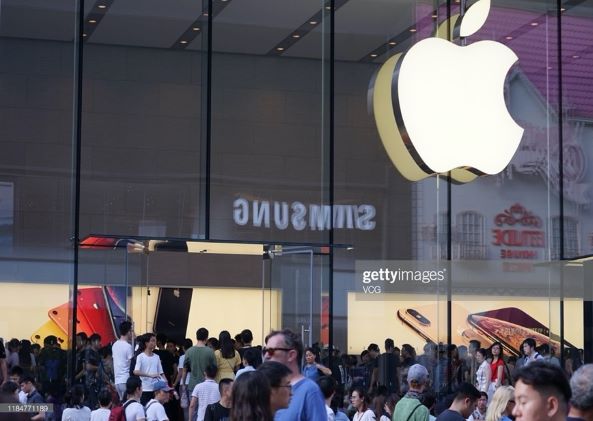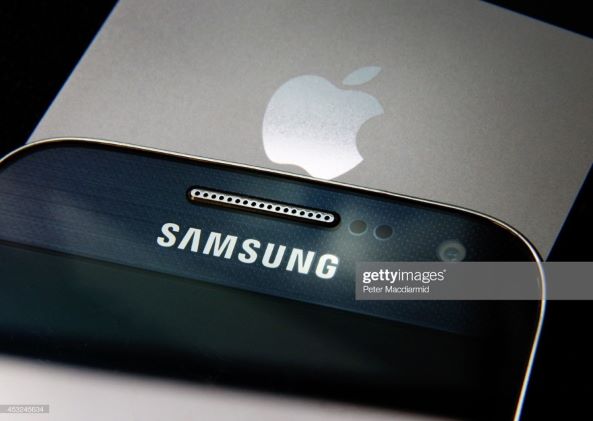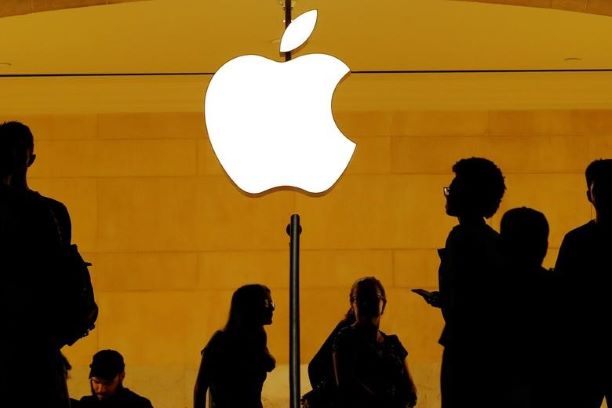Voices from the Sylff Community
Dec 13, 2019
Copycats and Patent Wars: The Effects of Quality Investment
Qinquan Cui, a 2017 Sylff fellow at Sun Yat-sen University in China, is currently conducting research as a visiting PhD student at the University of California, Los Angeles (UCLA). Recently, he published his thesis “Quality investment, and the contract manufacturer’s encroachment” in one of the flagship research journals. In this article, he shares his analysis and perspectives on global business issues.
* * *
Multinational cooperation has become increasingly popular in the manufacturing industry, including contract manufacturing and the setting up of joint ventures in emerging economies. In contrast to integrated business models in the past where the manufacturer had absolute control over material supply, manufacturing, assembling, and retailing, the core manufacturer in the new era has to face competition from business cooperators who can even be copycats. [1,2,3] This owes to the spillover and leakage of technology between different entities in a supply chain, which is a double-edged sword. [4] The positive side has been proven by Toyota’s knowledge-sharing network by learning product information. [5] However, product innovation can be imitated by local suppliers or contract manufacturers from the channel of foreign direct investment and product quality investment, leading to an emerging proliferation of supply chain encroachment. In such a situation, contract manufacturers (CMs) establish direct channels to compete with original equipment manufacturers (OEMs).
The Patent Fights
This type of supply chain encroachment has induced a few intense fights - costly juristic activities. To stop such a practice of market entry, Apple Inc. (an OEM) fought with Samsung Electronics Co., Ltd. (a kind of CM), because the latter had been copying Apple’s product designs and patents for a long time. Recent years have witnessed a battle in which Apple took legal action against Samsung for product plagiarism, which has cost the former more than one billion dollars. [6] However, the United States Supreme Court appeared to be stuck in a dilemma over how to deal with the high-stakes battle between the two. [7] It indicated that it was uncertain how much money the South Korean electronics company owed for infringing patents on the iPhone’s design. Thus, it seems that filing a lawsuit has brought only a faint possibility of blocking Samsung’s encroachment and compensating for Apple’s losses caused by the former’s imitations. The complexity and uncertainty of the legal environment in different countries are mainly accountable for this dilemma.
Strategic Quality Investment as a Weapon
To reduce the contract manufacturer’s incentive of encroachment by imitation, Apple has turned to a more attainable operational strategy—investing in product quality improvement. Accordingly, Apple’s investment in research and development (R&D) has increased significantly; for instance, the fiscal year 2016 saw a 25% increase from the previous year, which contrasted sharply with the 8% fall in revenue. [8]
One important point should be made clear: sometimes the upgrade of Apple’s products is not significant, and thus the differences between the two companies’ products are not distinct, while at other times the update is striking. In addition, the contract manufacturer does not always keep up with the pace of Apple’s product quality upgrade or compete with Apple by imitation. This makes people wonder under what conditions Apple would enhance investment for improvements in product quality and be highly cautious of the co-competitor’s imitations. A question then arises: is the CM’s threat of competition one of the motivations for the OEM to invest in product quality improvement?
The Multiple Effects of Quality Investment
When the collaborator is a copycat, there are two major concerns for the profit-maximizing OEM. First, enduring a CM’s imitation and encroachment without any costly deterrence is a conservative strategy, but the OEM has to share the retail revenue with the CM. Second, investing in quality improvement has multiple effects compared with the strategy of no investment: (1) it may stop the CM from encroaching and benefit the OEM; (2) if the CM’s encroachment cannot be prevented, the OEM’s profit may deteriorate, while the rival (CM) could obtain more retail revenue by imitation; and (3) a profit improvement might be induced by the OEM’s quality investment, regardless of whether the encroachment is prevented or not.
Besides, in order to enter the OEM’s final market, the CM would strategically adjust the wholesale price to affect the OEM’s sourcing quantity. The OEM may then benefit from the CM’s encroachment if the wholesale price becomes lower.
Research Questions
Motivated by the above discussions, my research “Quality investment, and the contract manufacturer’s encroachment,” published in the European Journal of Operational Research, aims to explore the following three questions by analyzing a game-theoretical model. (The main content of this article is based on the above published research.) First, under what economic conditions does the CM’s encroachment occur? Second, should the OEM invest in quality as a mechanism to deter—or encourage—the (potential copycat) CM’s encroachment? Third, under what conditions can the CM’s encroachment achieve a Pareto improvement instead of causing a loss to the OEM?
Main Findings
Without the OEM’s quality investment, the CM always has the incentive to encroach on the OEM’s market and will claim a higher wholesale price in contrast with the ideal scenario without encroachment, but the increase of the wholesale price will be mitigated by the CM’s higher imitating ability. Then the OEM’s profit will decline as the product demand decreases due to competition from the CM.
Furthermore, when there is an attainable quality investment opportunity for the OEM, once the investment is executed, the CM will prefer the irresponsible encroachment only if its imitating capability exceeds a certain threshold. Alternatively, the CM’s encroachment policy may depend on the characteristics of the OEM’s investment. In the latter scenario, the strategic interactions between the OEM and CM become more intricate, depending on the nature of the quality investment and the CM’s imitating capability.
Another key finding shows that the CM’s threat of encroachment can facilitate the OEM quality investment and that quality investment could be preferred if it can blockade the CM’s encroachment even though the quality investment per se is unprofitable. Overall, quality investment is partially effective in deterring the CM’s encroachment. Moreover, it is found that a win-win situation can be induced by the encroachment when quality investment is implemented by the OEM; in other words, if the CM’s imitating ability is not extremely strong, the OEM’s profit can be improved by the CM’s encroachment.
Managerial Insights
The motivations for the OEM’s quality improvement (investment) lie in two aspects. Firstly, it can stimulate market demand for the OEM’s original product, which can generate more retail revenue even as the CM acts as a free rider and copycat. Secondly, quality investment is also a powerful weapon to deter the competitive CM’s encroachment. Moreover, it is found that the CM’s encroachment is certain to happen when its imitating ability is strong, in which case the structure of quality investment no longer matters.
Furthermore, research findings show that the CM’s imitation and encroachment can contribute to a win-win situation for both parties under certain conditions. In this scenario, the OEM’s profit increment is generated by an increased demand for the original product and a lower wholesale price, while the retail price of the original product falls compared with the situation without encroachment.
However, quality investment is not always an effective solution to deterring the CM’s encroachment or helping encroachment improve the OEM’s profit. For instance, an encroachment by a CM with a strong imitating ability and an investment structure characterized by low investment cost and low quality improvement will certainly hurt the OEM’s profit.
This explains why, among those OEMs who established joint ventures (or other forms of cooperation) in developing countries, some would use quality improvement to deter their partners’ product imitation and encroachment, others prefer to invest in quality improvement and wink at the CM’s encroachment, and yet others complain about their CMs’ irresponsible imitation behavior.
As stated by the New York Times, the insights of this research are in line with the prediction that “Apple can find better ways of earning hundreds of millions of dollars than fighting a decade-long lawsuit.” [9] Then the courtroom is not always the place to try to get patent problems solved. Instead, the alternative operational strategy—quality (R&D) investment—would be a more efficient weapon that can deter copycats’ imitations and supply chain encroachments.
References
[1] Chen, Y.J., S. Shum, and W. Xiao. 2012. Should an OEM retain component procurement when the CM produces competing products? Production and Operations Management, 21 (5), 907–922.
[2] Cui, Q. (2019). Quality investment, and the contract manufacturer’s encroachment. European Journal of Operational Research, 279, 407–418.
[3] Cui, Q., C.H. Chiu, X. Dai, and Z. Li. 2016. Store brand introduction in a two-echelon logistics system with a risk-averse retailer. Transportation Research Part E: Logistics and Transportation Review, 90, 69–89.
[4] Aldieri, L., V. Sena, and C.P. Vinci. 2018. Domestic R&D spillovers and absorptive capacity: Some evidence for US, Europe and Japan. International Journal of Production Economics, 198, 38–49.
[5] Dyer, J.H., and N.W. Hatch. 2004. Using supplier networks to learn faster. MIT Sloan Management Review, 45 (3), 57.
[6] Eichenwald, K. 2014. The great smartphone war. Vanity Fair, May 3, 2014.
[7] Kendall, B. 2016. Supreme court hears Apple-Samsung patent case. The Wall Street Journal, October 12, 2016.
[8] Gallagher, D. 2016. What does Apple get for $10 billion of R&D? The Wall Street Journal, October 28, 2016.
[9] Nicas, J. 2018. Apple and Samsung end smartphone patent wars. The New York Times, June 27, 2018.



